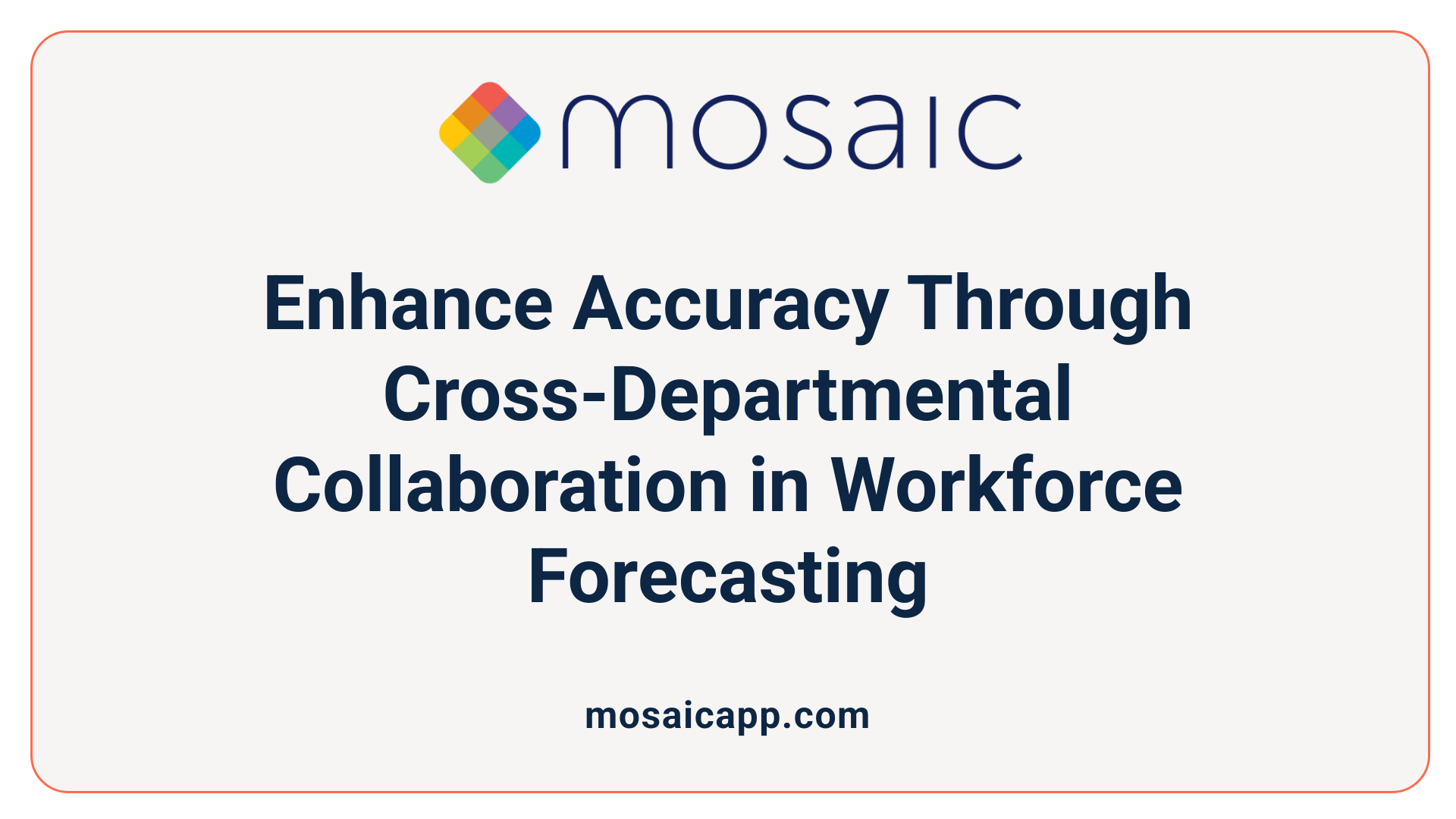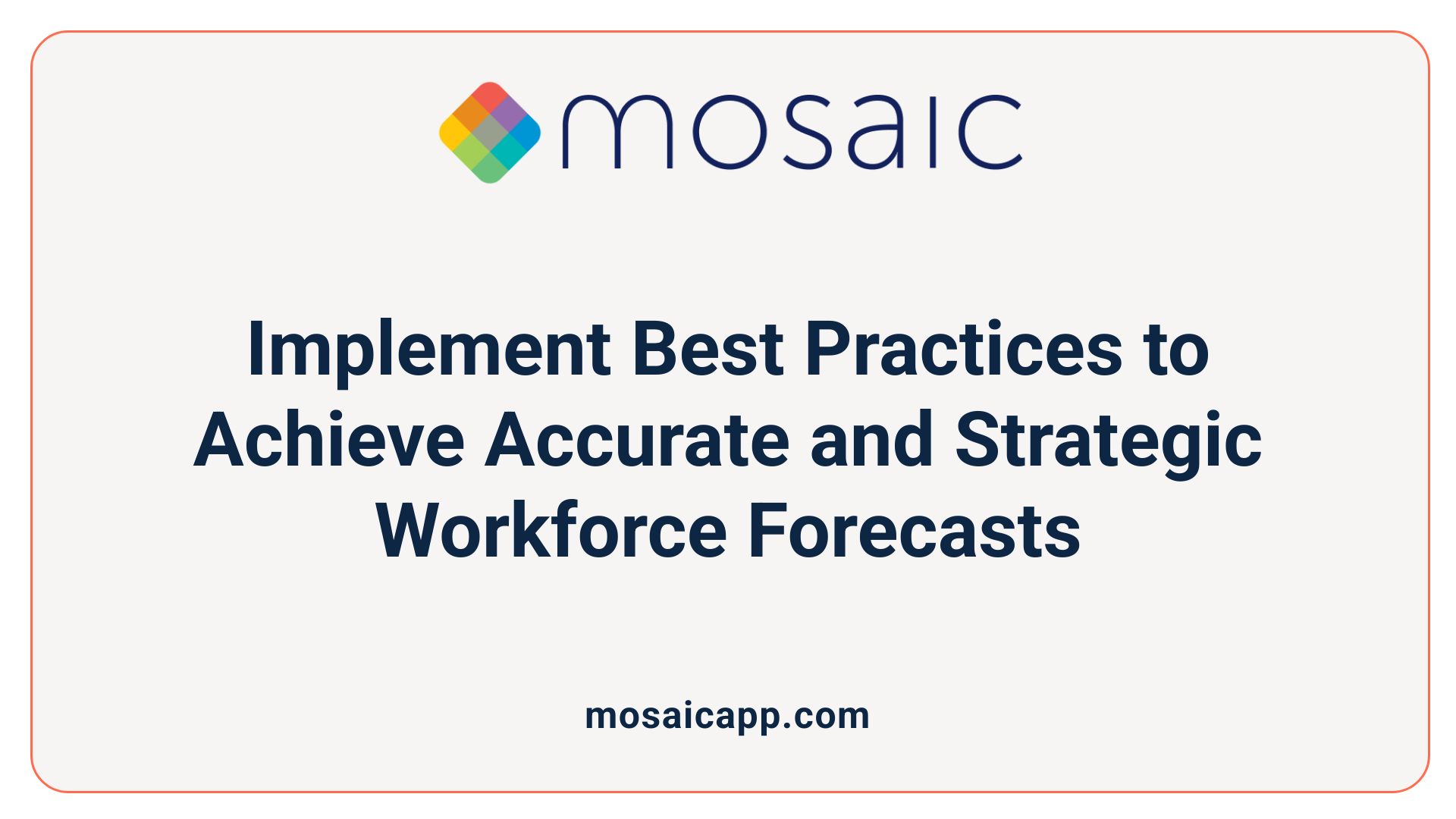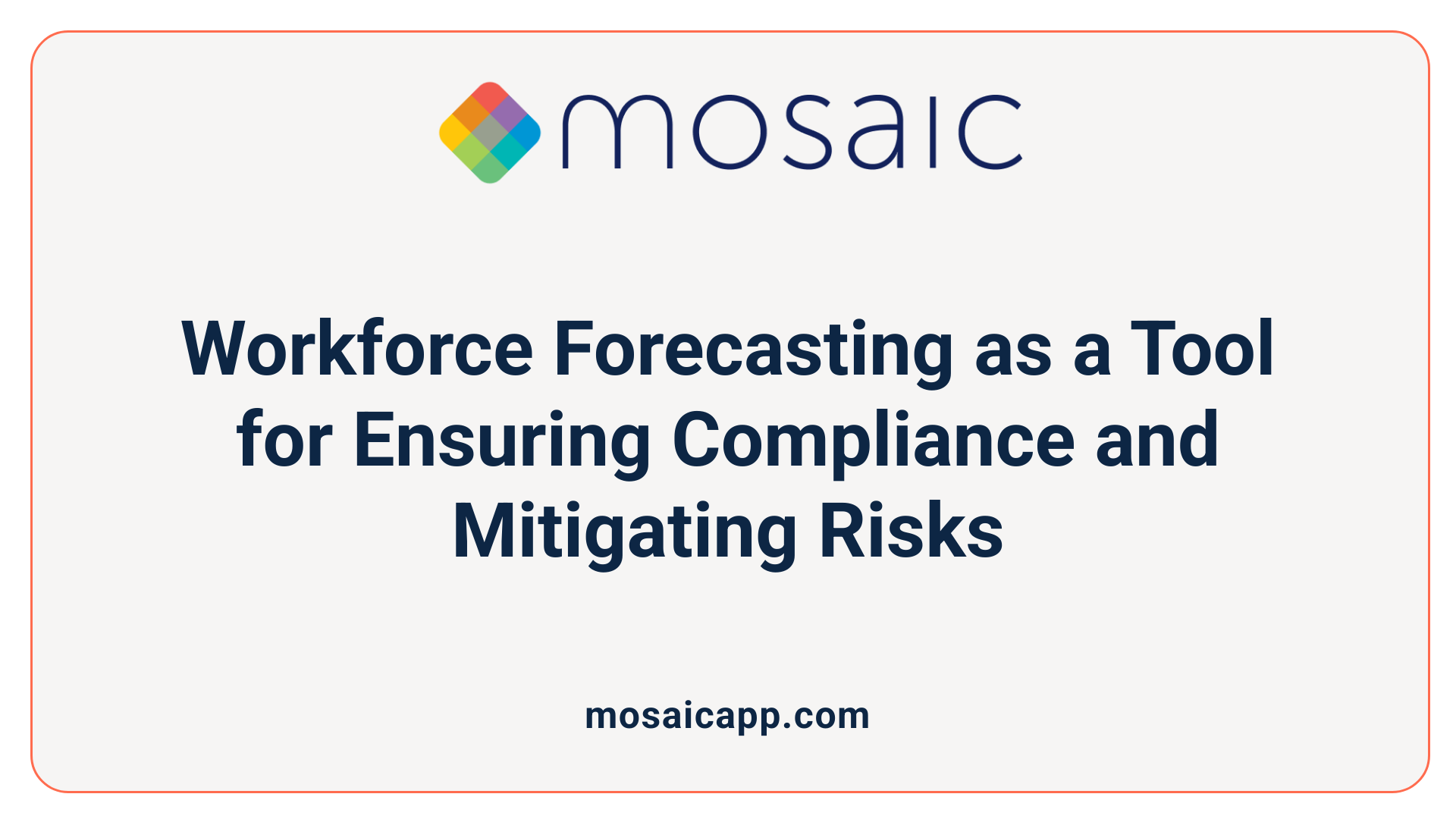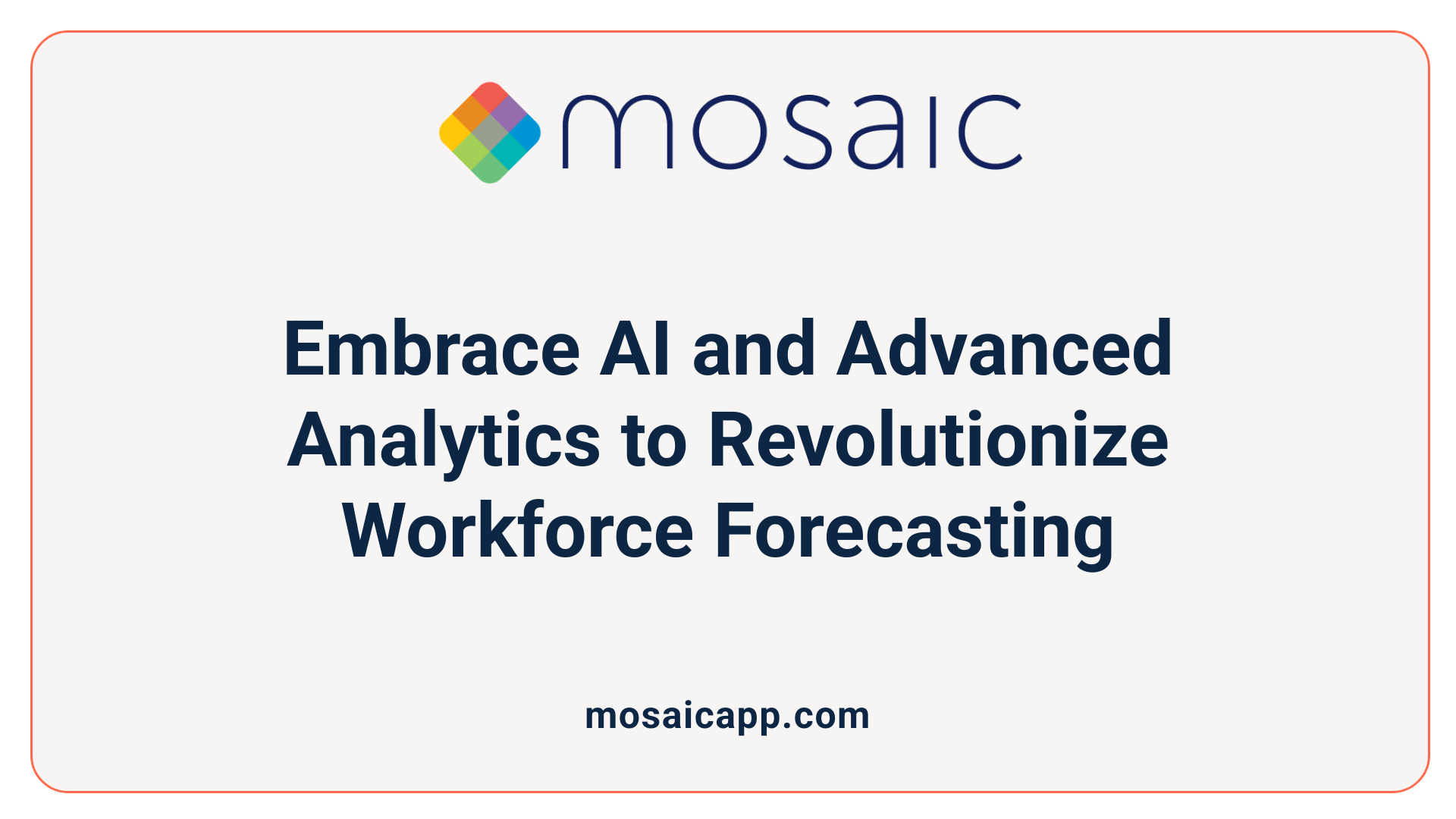Understanding Workforce Forecasting in Modern Staffing
Workforce forecasting is revolutionizing how organizations approach hiring and staffing decisions. By accurately predicting future talent needs through advanced data analysis and strategic planning, companies are ensuring they have the right people with the right skills at the right time. This proactive approach not only helps avoid talent shortages and reduce turnover but also drives competitive advantage and operational efficiency across industries.
Defining Workforce Forecasting: A Strategic Imperative
What is workforce forecasting and how does it differ from traditional workforce planning?
Workforce forecasting is the process of predicting an organization's future staffing needs to ensure it has the right people with the right skills at the right time. This proactive approach supports better alignment of workforce capabilities with long-term business goals.
Unlike traditional workforce planning, which often focuses on immediate or internal staffing issues and uses mostly qualitative methods, workforce forecasting adopts a forward-looking perspective. It emphasizes examining long-term, external influences such as market trends, industry developments, and economic conditions.
Focus on long-term and external trends
Workforce forecasting takes into account factors beyond just the organization's current state. It considers shifts in labor markets, technological advancements, and regulatory environments to anticipate how these elements will impact future staffing needs. This broader view helps organizations stay competitive and agile.
Use of quantitative methods like scenario modeling and predictive analytics
To enhance accuracy, workforce forecasting uses quantitative tools including scenario modeling and predictive analytics. Scenario modeling allows organizations to simulate various future conditions and their impact on workforce demand. Predictive analytics leverages historical data combined with current trends to forecast staffing requirements with greater precision.
By integrating these advanced methodologies, workforce forecasting goes beyond simple headcount planning to enable strategic workforce decisions that better prepare organizations for change and growth.
Key Components and Methodologies of Workforce Forecasting
Which methodologies are used in workforce forecasting?
Workforce forecasting employs a variety of methods including qualitative approaches such as the Delphi method, scenario planning, and judgmental forecasting; quantitative methods like time series analysis and regression analysis; and hybrid models that integrate both qualitative and quantitative techniques to provide comprehensive and adaptable forecasts.
Historical Data Analysis
Historical data serves as a foundation for predicting future workforce needs by examining past staffing patterns, turnover rates, and performance metrics. This data helps organizations identify trends and cyclical patterns impacting staffing requirements.
Market Trends
Understanding external market forces such as industry growth, economic shifts, and demographic changes enables organizations to anticipate changes in talent demand. This external focus distinguishes workforce forecasting from traditional short-term planning.
Predictive Analytics
Advanced data analytics tools utilize machine learning and statistical models to interpret large datasets and predict future workforce needs accurately. Predictive analytics enhance decision-making by providing data-driven insights on hiring, training, and skills development.
Scenario Planning
Scenario planning prepares organizations for various future possibilities by modeling different workforce demand scenarios. This technique supports risk mitigation and strategic agility by allowing HR teams to develop flexible staffing strategies based on potential changes in the business environment.
Qualitative and Quantitative Forecasting Methods
Qualitative techniques gain insights from expert judgments and group consensus, while quantitative methods rely on numerical data analysis. Combining these approaches ensures forecasts incorporate both hard data and contextual understanding.
Hybrid Models Combining Approaches
Hybrid forecasting models blend qualitative insights with quantitative data, leveraging strengths from both to address complex workforce challenges. This integrated approach offers accuracy, adaptability, and strategic depth, allowing organizations to navigate uncertainties effectively.
Technology Tools Empowering Accurate Workforce Forecasting
What tools and software support workforce forecasting?
Workforce forecasting relies heavily on advanced technology tools that enable organizations to predict their staffing needs accurately and efficiently. Specialized HR software and workforce management platforms play a pivotal role in this process.
Popular tools like ADP Workforce Now, Ceridian Dayforce, SAP SuccessFactors, and UKG Dimensions are commonly used to empower workforce forecasting. These platforms help HR teams analyze historical workforce data alongside market trends, perform scenario simulations, and optimize employee scheduling.
Capabilities of Workforce Forecasting Software
These software solutions offer a robust array of capabilities:
- Data Analysis: They process vast amounts of internal and external data, including past hiring patterns, current employee skill sets, and future business forecasts.
- Scenario Simulation: Workforce forecasting platforms allow organizations to model different staffing scenarios. This includes changes in market demand, potential turnover rates, and recruitment outcomes.
- Scheduling Optimization: By analyzing resource availability and skill gaps, these tools help optimize employee scheduling to improve productivity and reduce overstaffing or understaffing.
Benefits of Using Workforce Forecasting Tools
Using these technologies, organizations can make informed and proactive decisions about talent acquisition, development, and retention to ensure alignment with strategic goals. The automation and real-time insights provided by these platforms reduce errors and increase forecasting precision, leading to cost-effective workforce planning and improved organizational agility.
Aligning Workforce Forecasting with Strategic HR Functions
How does workforce forecasting support strategic HR functions?
Workforce forecasting plays a crucial role in enhancing strategic HR by enabling organizations to plan accurately for future staffing needs. One primary benefit is resource allocation—forecasting helps distribute human resources efficiently, ensuring the right skills are available exactly when needed, avoiding both shortages and surpluses.
Building a talent pipeline is another vital aspect. Forecasting highlights potential future vacancies and skill demands, prompting proactive recruitment and development efforts. This prepares the organization to fill roles seamlessly without productivity loss.
Moreover, forecasting identifies skills gaps, allowing HR teams to implement targeted skills development programs. Through training initiatives informed by data-driven insights, companies can upskill current employees to meet evolving job requirements.
Succession planning benefits from workforce forecasting by recognizing positions critical to business continuity. By anticipating turnover or retirements, HR can develop internal candidates strategically prepared for advancement.
Lastly, forecasting supports risk mitigation related to staffing. It assists in complying with labor regulations and prepares organizations for external changes that might impact workforce availability. This foresight reduces the chance of staffing crises that can disrupt operations.
In summary, effective workforce forecasting empowers HR functions such as resource allocation, talent pipeline development, skills enhancement, succession planning, and risk management, all essential for sustaining organizational agility and growth.
Enhancing Hiring Decisions through Predictive Analytics
Analyzing Past Data and Future Demand
Workforce forecasting begins by examining historical staffing data and projecting future organizational needs. By leveraging predictive analytics, companies can anticipate changes in demand and adjust their hiring plans accordingly. This approach ensures that recruitment efforts align with actual workforce requirements, avoiding both overstaffing and talent shortages.
Identifying Skill Gaps
Through detailed analysis, forecasting reveals current and anticipated skill shortages. Identifying these gaps early allows HR teams to address them proactively by either upskilling existing employees or targeting specific competencies in new hires. This strategic insight makes the recruitment process more focused and effective.
Planning for Training or Talent Acquisition
Once skill gaps are identified, organizations can develop tailored training programs or seek out new talent that fills these roles. By forecasting future needs, companies can schedule training well in advance or launch recruitment campaigns that attract candidates with the precise skills needed, ensuring readiness when roles become critical.
Improving Employee Retention and Satisfaction
Accurate forecasting supports stable employment conditions and career progression opportunities, which are vital for employee satisfaction. When employees see clear pathways for growth and know their skills are aligned with the company's direction, retention rates improve significantly. This stability benefits the organization by reducing turnover costs and maintaining an engaged workforce.
How does forecasting improve hiring decisions and employee retention?
By analyzing historical workforce data alongside future demand projections, workforce forecasting helps identify skill gaps early, enabling organizations to plan targeted training or acquire necessary talent. This proactive approach contributes to more precise hiring decisions, stable employment conditions, and enhanced career development opportunities, which in turn improve employee satisfaction and retention.
Forecasting’s Role in Optimizing Resource Management for Projects
How does resource forecasting optimize project management and staffing?
Resource forecasting is essential in predicting future staffing and resource needs within project management. By analyzing data inputs such as sales pipelines and timesheets, organizations can anticipate the resources required to meet project objectives.
This forecasting enables project managers to allocate team members and other resources effectively, ensuring the right people are assigned to the right tasks at the appropriate times. Such precision helps avoid common pitfalls like overstaffing—where unnecessary labor costs accumulate—or understaffing, which risks project delays and burnout among employees.
Moreover, accurate resource forecasting supports maintaining steady team productivity. Understanding upcoming staffing demands allows for better scheduling and workload distribution, which is critical to meeting deadlines and staying within budget.
Using resource forecasting techniques enhances both operational efficiency and strategic planning. It allows organizations to stay agile by adapting staffing levels to changing project scopes or timelines, thereby reducing conflicts and anticipating workload bottlenecks.
In summary, resource forecasting leverages relevant data and predictive tools to optimize project staffing, safeguard productivity, and ensure successful project completion.
Integrating Cross-Departmental Collaboration in Forecasting Processes

Why is collaboration across departments essential in workforce forecasting?
Collaboration across departments ensures workforce forecasting incorporates diverse insights and aligns staffing strategies with overall organizational objectives. This collective approach improves forecast accuracy, facilitates agile responses to internal or market changes, and enhances the integration of HR with business goals.
Importance of interdepartmental cooperation
Effective workforce forecasting depends on input from multiple departments such as HR, finance, operations, and project management. Each brings unique perspectives on resource availability, skill requirements, and future demands. By working together, departments share critical data like sales pipelines, employee availability, and market trends, fostering a comprehensive view of staffing needs.
Aligning workforce strategies with organizational goals
Cross-departmental collaboration helps ensure that workforce plans support the company’s long-term strategic objectives. When forecasting efforts are aligned with business priorities, organizations can better allocate resources, develop talent pipelines, and anticipate skill gaps. This coordination enables proactive planning for changes in market conditions or organizational growth.
Improving accuracy and responsiveness
Sharing real-time data and insights across departments allows forecasts to be more accurate and adaptable. Collaborative scenario planning and use of integrated HR and resource management software provide a unified forecasting approach. This helps organizations quickly adjust staffing levels, manage turnover risks, and respond to both internal shifts and external market conditions promptly.
By embedding cross-departmental collaboration, workforce forecasting becomes a dynamic tool that enhances organizational agility, talent management, and long-term success.
Addressing Challenges in Workforce and Resource Forecasting
What challenges affect effective workforce and resource forecasting?
Effective forecasting faces several common obstacles that organizations must navigate to ensure accurate and actionable staffing insights. One major challenge is limited visibility into current resource availability. Without clear, real-time data on existing workforce capacity, companies struggle to predict future staffing needs reliably.
Balancing workloads is another critical issue. Forecasting must account for fluctuating project demands and prevent scenarios of both overburdening employees and underutilizing talent. This balancing act affects productivity and employee satisfaction.
Aligning staffing capacity with evolving business goals adds complexity. As organizational objectives shift, forecasts need adjustment to remain relevant and supportive of long-term strategies.
Managing data dependencies is essential but challenging. Workforce forecasting involves aggregating information from diverse sources like CRM, time-tracking, and HR software systems. Ensuring data consistency and integration requires sophisticated management.
Lastly, a strong requirement exists for continuous access to real-time data paired with robust forecasting tools. These technologies, such as advanced resource management software, enable dynamic updates and scenario modeling, improving prediction accuracy and responsiveness to change.
Addressing these challenges involves investing in integrated data systems, fostering cross-departmental collaboration, and regularly refining forecasting processes, which collectively help organizations optimize staffing and resource allocation amid uncertain conditions.
Best Practices for Implementing Workforce Forecasting

What are best practices for effective workforce forecasting?
Implementing workforce forecasting successfully requires several strategic best practices to ensure accuracy and organizational alignment.
Setting clear forecasting goals is essential. Organizations should define specific, measurable objectives for their forecasting efforts aligned with broader business goals. This clarity guides the choice of techniques and helps assess forecast effectiveness.
Using appropriate tools and methodologies is crucial. Leveraging advanced HR software such as SAP SuccessFactors or UKG Dimensions helps analyze data, simulate scenarios, and optimize staffing. Employing a mix of qualitative methods (like scenario planning) and quantitative models (such as regression analysis) increases forecast reliability.
Regular data monitoring enables timely updates to forecasts as new information or market changes arise. This continuous evaluation helps catch potential shifts early, reducing risks from outdated projections.
Training HR teams ensures staff are proficient in forecasting principles and tools. Well-trained professionals can interpret data correctly and make informed recommendations, improving forecast quality.
Lastly, stakeholder engagement promotes cross-department cooperation. Involving leaders from finance, operations, and other areas aligns workforce plans with organizational priorities and fosters buy-in for forecast-driven decisions.
Together, applying these best practices enhances workforce forecasting accuracy, supports strategic human resource management, and drives sustainable competitive advantage.
Leveraging Scenario Planning for Flexible Workforce Strategies
How does scenario planning enhance workforce forecasting?
Scenario planning allows organizations to create and analyze multiple potential future staffing conditions and market environments. This flexibility helps anticipate various risks and opportunities, empowering companies to adjust workforce strategies proactively and maintain agility amid uncertainty.
Scenario modeling in forecasting
Scenario modeling involves developing different hypothetical future states based on various external and internal factors affecting workforce needs. By simulating these diverse scenarios, organizations can identify potential talent shortages, skill gaps, or overstaffing risks well in advance. This method complements quantitative data analysis by incorporating qualitative insights and market trends, yielding a comprehensive forecast.
Preparing for multiple future staffing situations
With scenario planning, organizations prepare contingency plans that address different staffing challenges. For example, they can explore scenarios such as rapid business growth, sudden market downturns, or shifts in technology demands. Preparing for these multiple futures enables quicker decision-making regarding recruitment, training, or resource reallocation, thereby avoiding workforce disruptions.
Enhancing organizational agility
By integrating scenario planning into workforce forecasting, companies gain the ability to adapt swiftly to changing conditions. This supports agile responses to competitor moves, regulatory changes, or economic fluctuations. Ultimately, a scenario-driven approach strengthens workforce resilience, supports innovation, and ensures alignment with evolving business goals.
Impact of Workforce Forecasting on Compliance and Risk Management

In what ways does workforce forecasting support compliance and risk mitigation?
Workforce forecasting plays a vital role in helping organizations maintain compliance with labor laws and manage staffing-related risks. By accurately predicting future staffing needs, organizations can ensure they meet legal requirements related to employee hours, benefits, and workplace conditions, effectively reducing risks associated with labor law violations.
Moreover, workforce forecasting enables companies to anticipate changes in regulatory environments. As regulations shift, organizations can proactively adjust their staffing strategies to align with new standards, minimizing disruption and legal exposure.
In addition, forecasting supports risk mitigation by identifying potential staffing shortages or surpluses early. This foresight helps avoid last-minute hiring decisions that might lead to hiring unqualified personnel or overextending budgets. Maintaining the correct staffing levels also contributes to safer working conditions and better adherence to occupational safety regulations.
Ultimately, workforce forecasting ensures organizations are prepared to comply with evolving legal requirements while mitigating risks linked to workforce mismanagement. This readiness not only preserves organizational reputation but also fosters a stable and lawful work environment.
The Role of Data-Driven Insights in Improving Talent Pipeline Development
How do data-driven insights improve talent pipeline development?
Data-driven workforce forecasting plays a crucial role in developing effective talent pipelines by enabling HR teams to anticipate long-term staffing needs accurately. By analyzing historical data, market trends, and predictive analytics, organizations can identify critical skills required for future growth and talent gaps that need addressing.
This intelligence equips HR professionals to craft recruitment strategies that proactively target potential candidates with the right skills before shortages occur. Additionally, it helps in nurturing internal talent by aligning skills development programs and succession planning efforts with forecasted demands.
Using data to develop talent pipelines
Workforce forecasting harnesses various data sources and advanced tools to predict future talent requirements. These insights guide HR in focusing recruitment efforts on high-demand roles and emerging skill sets. Combining quantitative methods like regression analysis with qualitative insights such as scenario planning ensures a comprehensive understanding of potential future scenarios.
Such data-driven approaches support the continuous cultivation of a robust talent pool that remains aligned with evolving organizational goals, reducing reliance on reactive hiring.
Forecasting long-term staffing needs
Long-term workforce forecasting extends beyond immediate vacancies to encompass external market shifts and organizational changes. This forward-looking perspective allows companies to prepare their talent pipelines well in advance, providing the flexibility to adapt recruitment and development strategies as conditions evolve.
Enhancing recruitment strategies
Integrating forecasting data into recruitment strategies improves targeting and resource allocation. Organizations can prioritize roles that are predicted to become critical, tailor job descriptions to reflect future skills demand, and engage in proactive talent engagement to reduce time-to-hire.
Furthermore, ongoing collaboration across departments, supported by HR technology platforms, ensures that recruitment efforts remain aligned with strategic business objectives.
| Aspect | Data-Driven Approach | Impact on Talent Pipeline |
|---|---|---|
| Long-term Staffing Needs | Uses predictive analytics and scenario planning | Enables proactive recruitment and development |
| Skill Gap Identification | Analyzes organizational and market skill demands | Guides targeted training and external hiring |
| Recruitment Strategy Enhancement | Prioritizes critical roles and refines hiring focus | Reduces time-to-hire and improves candidate quality |
| Collaboration and Technology | Integrates HR software tools for data analysis | Aligns workforce planning with organizational goals |
Continuous Improvement and Review in Workforce Forecasting
Why is ongoing review important in workforce forecasting?
Regularly updating workforce forecasts is essential to keep predictions accurate and relevant in a dynamic business environment. As new data becomes available or organizational priorities shift, forecasts need to reflect these changes to support effective staffing decisions. Without consistent review, forecasts can quickly become outdated, leading to talent shortages, overstaffing, or misaligned resource allocation.
Regularly updating forecasts
Workforce forecasting is not a one-time task but a continuous process. Organizations should establish routine intervals—such as quarterly or semi-annually—to review staffing predictions. This practice accounts for evolving market trends, changes in labor laws, technological advancements, and shifts in business strategy.
Responding to new data and changing circumstances
Integrating fresh data from sources like sales pipelines, employee time-tracking, and industry developments helps organizations adjust forecasts proactively. When unexpected events occur—such as economic fluctuations or sudden skill demand changes—rapid reassessment ensures the workforce remains agile and well-equipped.
Refining forecasting methods
Continuous improvement includes enhancing forecasting techniques by leveraging new tools and analytics. Organizations can incorporate advanced predictive analytics, scenario planning, and AI-driven insights to increase forecasting accuracy. Regular training and cross-functional collaboration also contribute to method refinement, aligning workforce strategies with strategic business goals.
Adopting a culture of ongoing evaluation and flexibility in workforce forecasting enables organizations to respond effectively to change, optimize talent utilization, and maintain competitive advantage in an ever-changing market.
Future Trends: AI and Advanced Analytics in Forecasting

What future trends are shaping workforce forecasting?
Workforce forecasting is rapidly evolving, driven by emerging technologies like artificial intelligence (AI) and advanced analytics. These tools enable organizations to process vast amounts of data more accurately and efficiently than ever before. AI-driven insights help uncover hidden patterns and predict workforce needs with greater precision.
Emerging AI-driven insights
Artificial intelligence leverages machine learning and predictive analytics to analyze historical data, market fluctuations, employee performance, and external factors. This enables more accurate forecasting by anticipating skill shortages and turnover risks. AI can continuously learn from new data, refining its predictions to keep up with organizational changes or market trends.
Enhanced scenario planning
Advanced analytics combined with AI allows organizations to create dynamic scenario models. These simulations consider various internal and external variables, such as economic shifts or changes in labor laws, providing HR teams with multiple future pathways. This enhances strategic planning by preparing organizations for uncertain conditions and identifying workforce risks early.
Automating forecasting processes
Automation tools integrated with AI reduce the manual workload of data collection and analysis. They streamline forecasting by updating models in real-time using current data from HR systems, sales pipelines, and project management software. Automated alerts from these systems help HR professionals promptly adjust staffing strategies, improving agility and responsiveness.
The integration of AI and advanced analytics into workforce forecasting empowers organizations to optimize resource allocation, minimize talent gaps, and maintain competitive advantage in an ever-changing business environment.
The Transformative Power of Forecasting in Hiring and Staffing
Workforce and resource forecasting have become indispensable components in modern hiring and staffing decisions. By leveraging historical data, predictive analytics, and scenario planning integrated with advanced technology tools, organizations can more accurately anticipate staffing needs, optimize resource allocation, and build resilient talent pipelines. This strategic foresight not only mitigates risks and enhances compliance but also fosters employee satisfaction and supports sustainable business growth. As forecasting methodologies continue to evolve, driven by innovations such as AI, their impact on workforce strategy will only deepen, empowering organizations to maintain competitiveness in a dynamic market.


